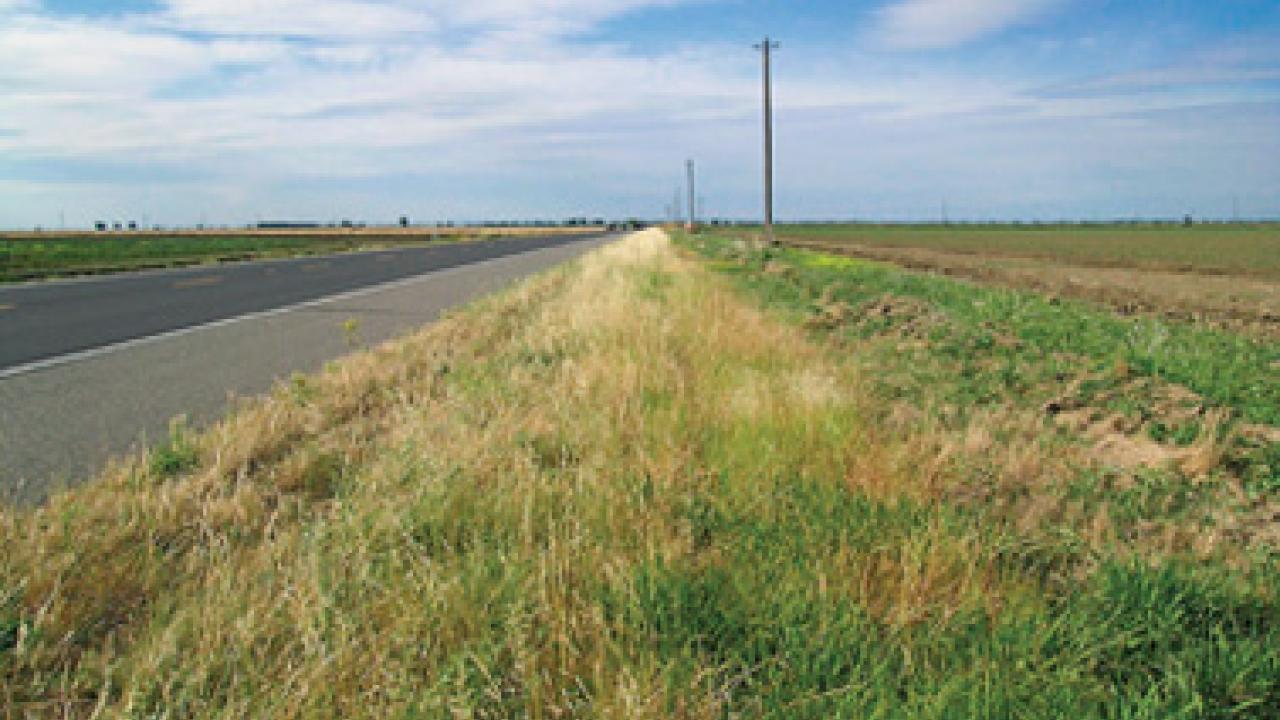Native perennial grasses have thrived for a decade or more after being planted along Sacramento Valley roadsides and have required little maintenance, UC Davis scientists say in a peer-reviewed study.
"Native grasses are somewhat labor-intensive to establish on roadsides, but after a few years they offer a low-maintenance alternative to the nonnative, invasive plants that dominate many California roads, which must be treated with frequent mowing and herbicide sprays," said Ryan O'Dell, restoration ecologist and the study's lead author.
O'Dell and colleagues Steve Young and Vic Claassen, all with the UC Davis Department of Land, Air and Water Resources, studied nine native-grass plots established by the Yolo County Resource Conservation District in 1993.
After they became established, the native grasses successfully outcompeted invasive, nonnative species such as Italian ryegrass and yellow starthistle. In general, many native perennial grasses can remain green well into California's dry season, reduce fire hazards, and provide high-quality forage and habitat for native animals, O'Dell said.
"The cost of installing native grassland can vary from about $500 to $1,400 per acre, and maintenance costs range from about $50 to $150 per acre for the next several years. But long-term, native perennial grasses are cost-effective and often require little maintenance."
The authors found that certain native perennial grasses prefer particular microhabitats in the roadside environment. For example, purple needlegrass and blue wildrye are more drought-tolerant and established themselves on shoulders and backslopes, while meadow barley and creeping wildrye were more suitable for wetter swales.
"If a roadside site's local conditions are not known or are highly variable across the site, planting a mix of all four species in all topographic zones has the potential to allow each species to establish itself in its optimal microhabitat," O'Dell said.
On the Net: The study appears in the April-June issue of UC’s California Agriculture journal: CaliforniaAgriculture.ucop.edu
-- California Agriculture
Media Resources
Dave Jones, Dateline, 530-752-6556, dljones@ucdavis.edu
